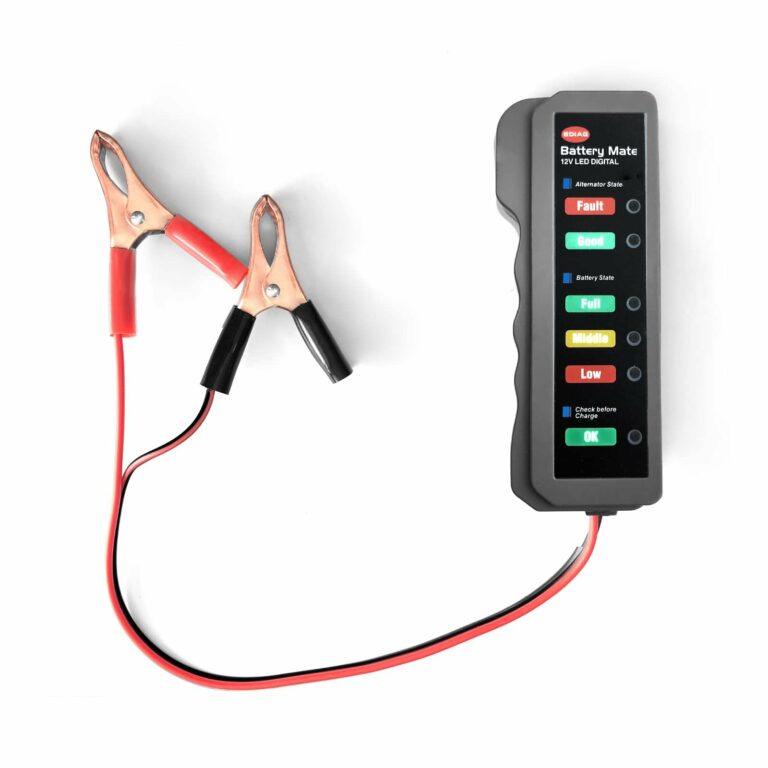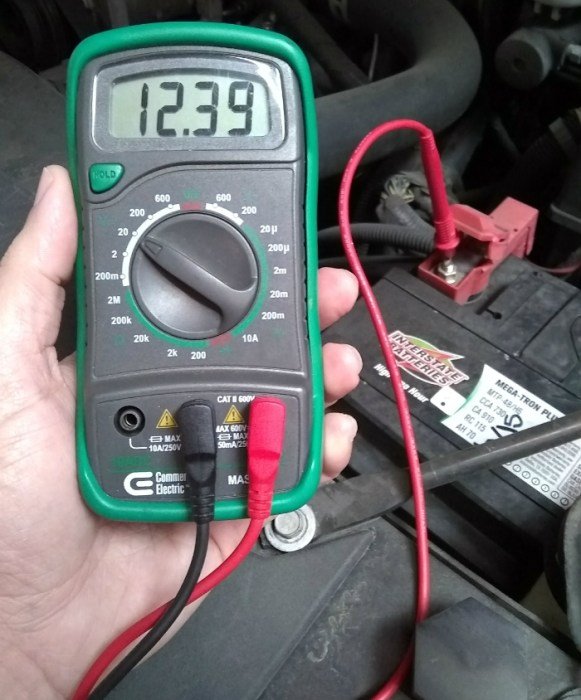How to Test a Car Battery’s Capacity with a Load Tester?
Have you ever wondered how to test a car battery’s capacity with a load tester? It’s a common question among car owners who want to ensure their battery is in good working condition. Fortunately, the solution is simpler than you might think. By using a load tester, you can accurately measure the capacity of your car battery and determine whether it needs to be replaced. In this article, we will guide you through the process, step by step, so you can confidently check the health of your car battery and avoid any unexpected breakdowns. Let’s get started!
How to Test a Car Battery’s Capacity with a Load Tester?
Understanding the Importance of Testing Car Battery Capacity
A car battery is a vital component in your vehicle’s electrical system. It provides the necessary power to start the engine, run the lights, and operate other electrical accessories. Over time, however, a car battery can lose its capacity to hold a charge effectively. Testing the battery’s capacity with a load tester is crucial to ensure its optimal performance and prevent unexpected breakdowns. In this article, we will explore the step-by-step process of testing a car battery’s capacity with a load tester.
Gathering the Necessary Tools and Equipment
Before you begin testing your car battery, it’s essential to gather the necessary tools and equipment. Here’s a list of items you’ll need:
1. Load Tester: A load tester is a device that applies a simulated load to the battery to measure its capacity.
2. Safety Equipment: Wear safety goggles and gloves to protect yourself from any potential hazards during the testing process.
3. Multimeter: This device helps measure the battery’s voltage accurately.
4. Battery Terminal Cleaner: Use a battery terminal cleaner to remove any corrosion or build-up from the battery terminals.
5. Battery Hydrometer: A hydrometer measures the specific gravity of the battery’s electrolyte, indicating its state of charge.
Preparing the Battery for Testing
Before testing the battery, it’s important to ensure it is properly prepared. Follow these steps:
1. Safety First: Make sure your vehicle is parked in a well-ventilated area, away from any flammable materials.
2. Turn Off the Engine: Ensure the engine and all electrical accessories are turned off.
3. Disconnect Accessories: Remove any accessories connected to the battery, such as phone chargers or GPS devices.
4. Clean Battery Terminals: Use a battery terminal cleaner to remove any corrosion or build-up from the battery terminals. This ensures a clean and reliable connection for testing.
5. Inspect Battery: Visually inspect the battery for any signs of damage, such as leaks or cracks. If you notice any, consider replacing the battery instead of testing it.
Performing the Load Test
Now that you have prepared the battery, it’s time to perform the load test. Follow these steps:
1. Set up the Load Tester: Connect the load tester to the battery by attaching the positive and negative leads to the corresponding terminals.
2. Set the Load: Adjust the load tester to apply the appropriate load based on your battery’s Cold Cranking Amps (CCA) rating. This information can be found in your vehicle’s manual or on the battery itself.
3. Start the Test: Activate the load tester and observe the reading on the display. The load tester will simulate various electrical loads on the battery, measuring its capacity to sustain the load.
4. Monitor the Results: Keep an eye on the load tester’s display as the test progresses. The display will show important information such as voltage drop, load duration, and battery capacity.
5. Interpret the Results: Compare the measured results with the battery’s specifications. If the battery meets or exceeds the recommended capacity, it is functioning properly. However, if the capacity falls below the specified range, it may be time to consider replacing the battery.
Additional Tests and Tips
While a load test provides valuable information about a battery’s capacity, there are additional tests and tips to consider:
1. Conduct a Voltage Test: Use a multimeter to measure the battery’s voltage when it’s not under load. A fully charged battery should read around 12.6 volts.
2. Specific Gravity Test: If your battery has removable caps, you can use a battery hydrometer to measure the specific gravity of the electrolyte. This test provides insights into the battery’s state of charge.
3. Regular Maintenance: Keep your battery in good condition by performing regular maintenance tasks such as cleaning the terminals, checking the electrolyte level (if applicable), and ensuring a secure battery hold-down.
4. Consult a Professional: If you are unsure about the results of the load test or experience ongoing battery issues, it’s best to consult a professional mechanic for a thorough diagnosis.
Frequently Asked Questions
How do I test a car battery’s capacity with a load tester?
To test a car battery’s capacity with a load tester, follow these steps:
What is a load tester?
A load tester is a tool specifically designed to assess the capacity and overall health of a car battery. It applies a controlled load to the battery and measures how well it performs under that load.
Can I use a multimeter instead of a load tester?
While a multimeter can provide some basic information about a battery’s voltage, it does not provide a comprehensive analysis of the battery’s capacity. It is recommended to use a load tester for a more accurate assessment.
How do I connect the load tester to the car battery?
First, ensure the engine is off and the headlights are turned off to prevent any electrical interference. Then, connect the load tester’s positive clamp to the battery’s positive terminal and the negative clamp to the negative terminal.
What load should I apply during the test?
The load applied during the test should correspond to the specifications provided by the load tester’s manufacturer. Some common load levels are 50%, 75%, and 100% of the battery’s cold cranking amps (CCA).
What results should I expect from the load test?
A healthy battery should be able to maintain a stable voltage within an acceptable range while the load is applied. If the voltage drops significantly or fluctuates excessively, it may indicate a weak or failing battery.
What should I do if the battery fails the load test?
If the battery fails the load test, it is likely time to replace it. Consider consulting a professional mechanic or visiting an auto parts store for assistance in selecting and installing a new car battery.
Final Thoughts
To conclude, testing a car battery’s capacity with a load tester is an essential step in determining its overall health and performance. By applying a controlled load to the battery and measuring the voltage drop, one can assess its ability to deliver power consistently. This method allows car owners to diagnose potential issues early on and take necessary steps to maintain and extend the battery’s lifespan. Regularly performing this test can help prevent unexpected breakdowns and ensure a reliable start every time. So, when it comes to ensuring your car battery’s longevity and efficiency, utilizing a load tester is a worthwhile practice.



